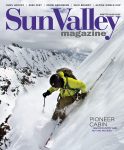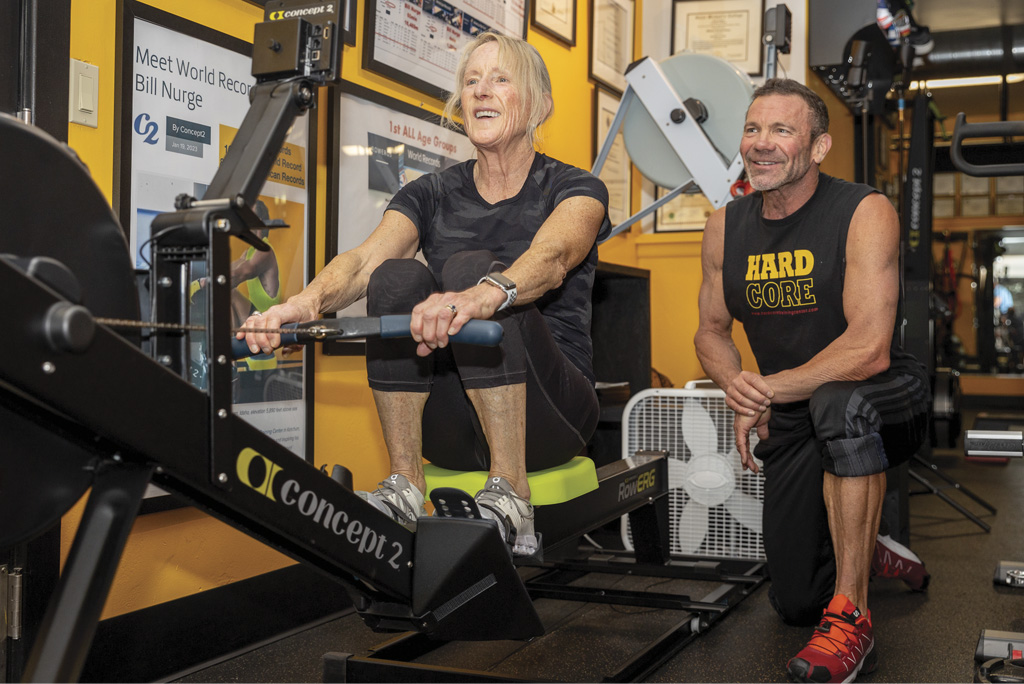Let’s be honest: the thousands of people who live or vacation in Sun Valley do it for the love of recreating outside in nature, amongst the mountains, not because of the to-die-for chocolate brownie cake at the Konditorei bakery.
The numerous outdoor activities are boundless, but no matter how much you exercise, you’ll eventually stare down the barrel of a severe age-old problem: you can’t have your cake and eat it, too.
The great news is if you train properly, you can have more cake, more fun, more energy, and higher levels of performance.
According to the latest research on aging and longevity, 6-Dimensions of Fitness are consistently linked to health span and longevity. While your favorite mountain activities may check the box for 1 or 2 dimensions, they fall abundantly short of the others, leaving your body lacking in what it needs to function optimally.
Let’s dive into the “use ’em or lose ’em” 6 Dimensions of Fitness relating to health span and longevity.
V02 MAX:
A recent study with 400,000 subjects shows that relative to the top 2.5% of individuals with the highest V02 (volume of oxygen consumed), the bottom 25% have a 400% greater all-cause mortality risk. Thrice weekly bouts of high-intensity intervals
are the cornerstone for building a bigger cardiovascular engine. Pro Tip: The best modalities for redlining oxygen utilization are not legs-only sprinting but total-body exercises like rowing on slides and Nordic skiing.
FUNCTIONAL MUSCLE MASS & BONE DENSITY:
The average 80-year-old has 30-50% less muscle mass and significantly reduced bone density compared to the 20-year-old iteration. The best strategy to offset the age-related diminution of bone density is a steady diet of total-body plyometrics, which includes jolting and twisting movements. Pro tip: Building better bones and muscles without getting injured is tricky. Avoid high-risk exercises like box jumps and kettlebell swings. Opt for low- risk/high-reward exercises such as squat-row jumps and elastic split-squat jumps.
- ATHLETIC POWER:
The ability to move quickly, deftly, and powerfully matters most in life and sports, not absolute “strength.” Teaching your body to move at different speeds and directions using different “tension” builds the requisite power aging bodies need for life and sports. Pro tip: Power = Force x Velocity. What’s missing from most training programs isn’t force; it’s speed; it’s learning how to proficiently accelerate your body mass—or a golf club—using multi- dimensional athletic movements.
- FUNCTIONAL MOBILITY:
Ideally, every repetition of every resistance training exercise is a “stretch,” so you’re improving muscle mobility and increasing the pliability of your connective tissue and joints. Pro Tip: What you don’t move, eventually won’t move…work on mobility daily!
- COORDINATION / BALANCE:
Train your dynamic balance and coordination “muscles” every session to minimize the risk of inadvertently falling and hurting yourself. As a rule, if you can close your eyes and properly perform an exercise, it’s not complicated enough to improve your vestibular system.
Pro Tip: Incorporate single-leg and bilateral balance exercises such as BOSU squats and slackline ball toss.
- CORE DYNAMIC-STABILITY:
Back pain is a leading cause of morbidity and disability in the United States. Your core is likely too stable/stiff, too fatigable, and isn’t properly trained to decelerate the rotational movements that are part and parcel of virtually every move you make in life and sports!
Pro Tip: If you want a not-smart “stable” core—like a turtle—that doesn’t move well and “goes out” frequently, practice stiffening exercises like planks and poses. If you want an intelligent core that’s bulletproof from pain and capable of producing power for the functional movements that define our lives and sports, practice overloading total-body rotational movements.
- COORDINATION / BALANCE:
Train your dynamic balance and coordination “muscles” every session to minimize the risk of inadvertently falling and hurting yourself. As a rule, if you can close your eyes and properly perform an exercise, it’s not complicated enough to improve your vestibular system.
Pro Tip: Incorporate single-leg and bilateral balance exercises such as BOSU squats and slackline ball toss.
- CORE DYNAMIC-STABILITY:
Back pain is a leading cause of morbidity and disability in the United States. Your core is likely too stable/stiff, too fatigable, and isn’t properly trained to decelerate the rotational movements that are part and parcel of virtually every move you make in life and sports!
Pro Tip: If you want a not-smart “stable” core—like a turtle—that doesn’t move well and “goes out” frequently, practice stiffening exercises like planks and poses. If you want an intelligent core that’s bulletproof from pain and capable of producing power for the functional movements that define our lives and sports, practice overloading total-body rotational movements.


